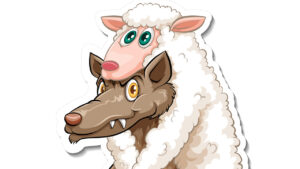PLAYING the persecuted victim, after being portrayed as a bully and villain, turns the tables on critics and adversaries. It is a marketing technique like “rebranding” of a product or personality.
Can a road rage incident caught on video turn an overbearing VIP berating a traffic enforcer from bully to the victim of police abuse instead? The traffic cop relates catching the car owner using the bus lane illegally, complete with flashing lights and horn-blowing. His narrative is one of being picked on by an abusive VIP just for doing his job. Add to that the fancy car of the apprehended traffic violator. The plate number of the vehicle is identified, with the car owner’s full name and address.
With all the media coverage, the VIP comes out of hiding. He is exclusively interviewed in an undisclosed place by invited media. The traffic violator presents himself as a victim. He was accosted while in his car on the special bus lane. Was this apprehending cop a hitchhiker, or worse a highway robber? Who knew?
The original beaten-up traffic enforcer, now healed of the bruises inflicted on him, is now projected as the villain who provoked the incident. (Why did he not identify himself? Anybody can wear a fake uniform of a traffic enforcer.)
There is then the convenient surfacing of “other victims” of abusive cops. As if following a script, apprehended Grab drivers, sidewalk vendors, and other vagrants denounce the now abusive traffic enforcer by name.
So, this teleserye ends with the bruised and battered enforcer now looking healed, assuming a new role as villain. (Does he have a good lawyer too?)
The growing PR function of lawyers now includes being the spokesperson of the accused and dealing with media. The client is made to look contrite and misunderstood (I thought he wanted to extort me) while the lawyer makes sure the script is holding together — we wish to settle this case, even if our client is the victim here. (Did you hear the table creak when it turned?)
The pattern of playing the victim card seems to be a standard defense tactic. It can be used for road rage as well as other crimes of personal violence like wife-beating (I was the victim of her infidelity) or even rape (her attire was provocative, and she seemed to consent to my advances. I was entrapped.)
Does turning the tables work in political situations too? Is it possible to rebrand a bully being investigated for unaccounted expenditures into the sympathetic victim of political intrigue? (I could have headed the ticket.)
What is needed to rebrand a natural bully and overlook charges of unaccounted budget depletion into a victim of powerful forces out to get her? Defenders of the bully who publicly issues threats if “something happens to her” are not limited to defining such pronouncements as “conditional threats.” Is it okay to dismiss a threat if it is on condition of being first its casualty?
The victim card requires the coverage of media which always likes this sort of mayhem, switching the interviewer from one side to the other and assisting in the obfuscation of the issue by bringing in other character witnesses who play supporting roles in the drama.
Supporters of the bully jump into the fray. They change the topic to the higher dollar remittances from OFWs, then, if they ever go back to the subject of traffic enforcers or congressional investigations, they may include infrastructure, and not missing intelligence funds.
There will always be stories of conflicts, complete with villains and victims. Switching roles, especially when one has already been a media personality in the past, can be challenging. Sometimes, villains just get too comfortable with their old roles. Investigations only reinforce past misdeeds.
This tale of villain and victim switching roles doesn’t always go according to plan. Sometimes, a long history of being a villain makes it difficult to turn the tables and be convincing as a victim. Certain villains with their aggressive bullying tactics from before are always perceived as rogues.
While the wolf in sheep’s clothing may prey on the flock, one that growls too loudly may find it difficult to blend in. Some wolves just can’t behave like sheep. They just stand out in the herd.
Tony Samson is chairman and CEO, TOUCH xda
ar.samson@yahoo.com

